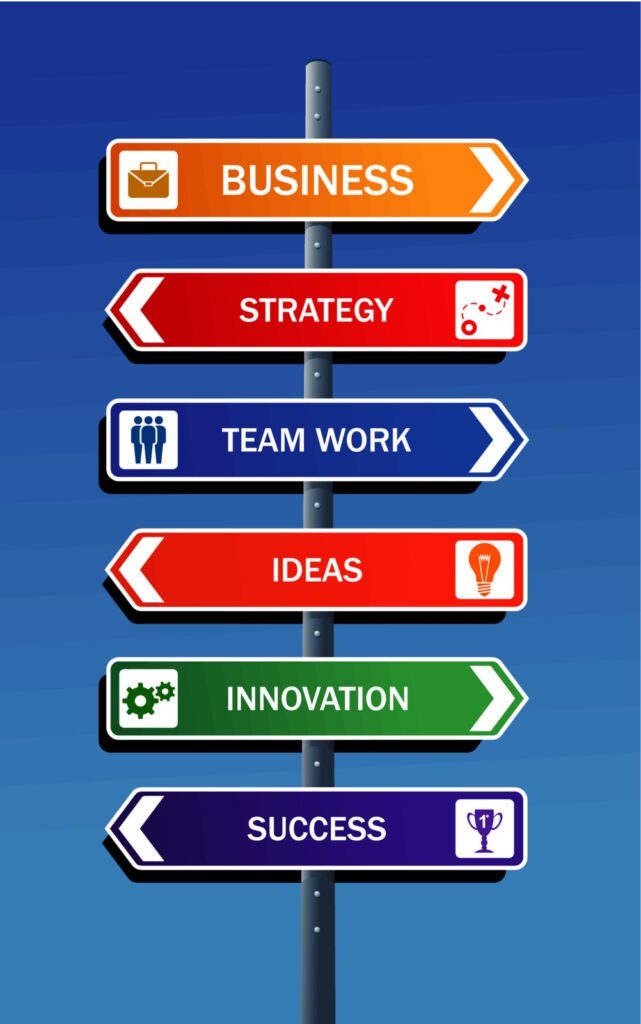FUNDAMENTALS OF SUCCESSFUL BUSINESS STRATEGY IMPLEMENTATION

FUNDAMENTALS OF SUCCESSFUL BUSINESS STRATEGY IMPLEMENTATION
A goal in business is a desired result and thousands of decisions made in the process of work. Achieving a goal is the implementation of a strategy that should ensure high results within a particular company with the help of available resources. In order for the strategy to be effective, each mechanism and participant in the work process must work professionally and coherently, including having a sufficient amount of resources and information.
Problems - systematically low performance and failures in management lead some managers to believe that the strategy is ineffective due to problems in the organizational structure, and correction begins with it. Of course, it is easier to rebuild the structure than to understand the content of each manager's work and check the effectiveness of interaction between departments. In addition, the result is immediately noticeable - "extra" positions are excluded from the staff, funds are saved, and the structure of the company itself looks more concise.
However, changing the organizational structure is not the primary tool for the successful implementation of the strategy. As part of the work of Mozhenkov Progress Consulting, we have helped more than 240 companies to increase efficiency, and, based on the experience gained, I can identify strategic areas that should be considered as a whole.
1. Purpose
Clear goal-setting is the first step to achieving results. Daily tasks, plans for periods and a global SUPER goal are milestones on the way to success. Each stage of work should provide for a measurable and understandable result for performers.
2. Separation of powers
Knowing what results and with what tools the company should achieve, it is important to determine the areas of responsibility of the performers and what decisions they have the right to make in the process of work - this is the consolidation of functions and the initial adjustment of the production mechanism.
3. 4 Efficiency Tools
1) KPI (Key Performance Indicators)
After defining responsibilities, it is important to establish KPIs – to highlight key performance indicators for employees. This is a tool for determining the effectiveness of work, which makes it possible to regularly evaluate and adjust the work of managers.
2) BDR – income and expenditure budget
Achieving financial goals requires constant fixation of costs and incomes - this is how the efficiency of the use of financial resources is monitored. The income and expenditure budget is a document where the flow of funds is recorded. I am convinced that the BDR should be a desk document for any leader.
3) CP – Profit Center
Profit Centre is a company or division that is responsible for extracting and distributing its own profits. The main task of the profit center is to reduce costs and increase income. Budget optimization within the profit center is a purposeful work to improve the company's financial performance.
4) The CC is a center of competence
Constantly changing market conditions and the transformation of business processes require constant development of the team. The Competence Center is a corporate university where the level of professional competencies is continuously determined, and the skills necessary for employees to perform their job functions are polished.
4. Information Sharing
Access to information, simplicity and high speed of data exchange between departments are the key to the smooth and correct operation of any company. A common excuse of an employee of an ineffective company is: "I didn't know...." This does not justify unprofessionalism, but it can often be a manifestation of a real lack of information. It is important to ensure that the team is aware of the company's products, organizational structure, make analytics available, and give employees clear regulations and instructions.
5. Stimulation
Work in a company is hired labor for a fee, the structure and size of which directly affects the efficiency of the employee. In order for each participant in the work process to be interested in achieving the company's goals, it is necessary to build a motivation system, where bonuses will be a positive reinforcement of the achievement of the established indicators.
6. Organizational structure
Staffing changes will only be effective when all of the above areas are properly configured. Close attention should be paid to the essence of managerial work - the ways of making decisions by managers and fixing their responsibility for the result.
The implementation of the strategy is a mechanism, the parts of which should be comprehensively and thoughtfully worked out. Set up the above tools - and your business will work smoothly and efficiently.
- Arts
- Business
- Computers
- Jogos
- Health
- Início
- Kids and Teens
- Money
- News
- Recreation
- Reference
- Regional
- Science
- Shopping
- Society
- Sports
- Бизнес
- Деньги
- Дом
- Досуг
- Здоровье
- Игры
- Искусство
- Источники информации
- Компьютеры
- Наука
- Новости и СМИ
- Общество
- Покупки
- Спорт
- Страны и регионы
- World


